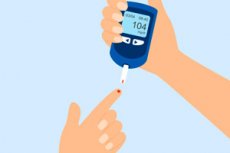
2型糖尿病患者面临的最大挑战之一是空腹血糖高。这是因为胰岛素抵抗的患者肝脏会开始产生葡萄糖,而这一过程目前科学界尚未完全了解。近日,发表在《内分泌与代谢趋势》(Trends in Endocrinology & Metabolism)上的一篇综述文章介绍了理解这一机制的重大进展,并确定了针对2型糖尿病药物研发的新靶点。世界卫生组织(WHO)将2型糖尿病称为21世纪的流行病之一。
研究及其参与者
该研究由巴塞罗那大学药学与食品科学学院的Manuel Vasquez-Carrera教授、巴塞罗那大学生物医学研究所(IBUB)、圣胡安德德乌研究所(IRSJD)以及糖尿病及相关代谢疾病生物医学研究中心(CIBERDEM)共同领导。此外,该研究还包括UB-IBUB-IRJSJD-CIBERDEM的专家Emma Barroso、Javier Jurado-Aguilar和Xavier Palomer,以及瑞士洛桑大学的Walter Wahli教授。
抗击疾病的治疗目标
2型糖尿病是一种日益常见的慢性疾病,由于人体对胰岛素的反应不足,导致血液循环中葡萄糖水平升高。该病可导致严重的器官损害,据估计,相当一部分患者尚未确诊。
在患者中,肝脏的葡萄糖合成途径(糖异生)过度活跃,可以通过二甲双胍等药物进行控制。“最近发现了一些参与控制肝脏糖异生的新因子。例如,我们的研究表明,生长分化因子(GDF15)可以降低参与肝脏糖异生的蛋白质水平,”Manuel Vasquez-Carrera教授说道。
为了在对抗这种疾病方面取得进展,还需要研究TGF-β等通路,这些通路参与了脂肪肝相关代谢功能障碍(MASLD)的进展,而脂肪肝通常与2型糖尿病并存。Vasquez-Carrera强调:“TGF-β在肝纤维化进展中起着重要作用,是导致肝脏糖异生增加,进而导致2型糖尿病的最重要因素之一。”
二甲双胍:最常见药物的秘密
二甲双胍是治疗2型糖尿病最常用的药物,它可以降低肝脏糖异生,但其作用机制尚不完全清楚。最近研究发现,该药物通过抑制线粒体电子传递链复合物IV来降低糖异生,这是一种独立于经典的AMPK蛋白激活效应的机制。
Vasquez-Carrera 指出:“二甲双胍抑制线粒体复合物 IV 的活性(而不是之前认为的复合物 I),从而降低了肝脏中葡萄糖合成所需底物的可用性。”
后续步骤Next steps
Vasquez-Carrera 领导的团队正在继续研究,以阐明 GDF15 调控肝脏糖异生的机制。“与此同时,我们希望开发能够提高循环中 GDF15 水平的新分子。如果我们拥有强效的 GDF15 诱导剂,我们将能够通过降低肝脏糖异生和该细胞因子的其他作用来改善 2 型糖尿病患者的血糖,”研究人员总结道。

